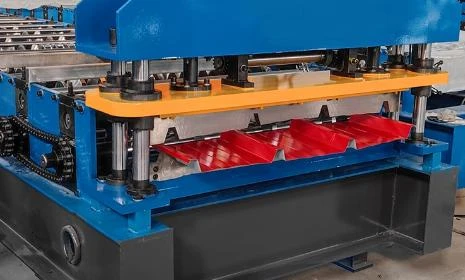High-Efficiency Fully Automatic Roll Forming Machine for Streamlined Production Processes
The Advancements and Applications of Full Automatic Roll Forming Machines
In the realm of modern manufacturing, efficiency and precision are paramount. One of the tools that exemplifies these qualities is the full automatic roll forming machine. This advanced piece of equipment has revolutionized the production processes across various industries, enabling manufacturers to produce high-quality metal components with remarkable consistency and speed.
Understanding Roll Forming
Roll forming, a manufacturing process involving the continuous bending of a long strip of metal, is used to create complex shapes and profiles. The material passes through a series of rollers that progressively shape it into the desired form. Full automatic roll forming machines streamline this process by integrating automation technologies that enhance efficiency and reduce labor costs.
Key Features of Full Automatic Roll Forming Machines
1. Automation and Control Full automatic roll forming machines are equipped with sophisticated control systems that automate various stages of the manufacturing process. This includes feeding, shaping, cutting, and stacking, which minimizes human intervention and enhances operational efficiency.
2. High Precision The use of advanced CNC (Computer Numerical Control) technology allows for precise adjustments and consistent product quality. Operators can easily program specifications, ensuring every piece produced meets the required tolerances and standards.
3. Speed and Efficiency These machines are designed to operate at high speeds, allowing manufacturers to meet large-scale production demands without sacrificing quality. The ability to process materials quickly means that manufacturers can reduce lead times and respond rapidly to market changes.
4. Versatility Full automatic roll forming machines can accommodate a wide range of materials, including different gauges of steel, aluminum, and other metals. This flexibility enables manufacturers to develop diverse products tailored to specific applications, from construction components to automotive parts.
5. Cost-effectiveness By minimizing labor requirements and maximizing production rates, full automatic roll forming machines help reduce overall manufacturing costs. Additionally, their efficiency in material usage leads to decreased waste, further enhancing cost-effectiveness.
full automatic roll forming machine

Applications Across Industries
The versatility of full automatic roll forming machines makes them suitable for various applications across numerous industries
- Construction In the construction sector, these machines are indispensable for producing structural components such as roof trusses, wall panels, and metal siding. Their ability to create custom profiles means they can cater to specific architectural designs.
- Automotive The automotive industry relies on roll forming for the production of chassis components, body frames, and other critical parts. The precision and strength provided by these machines contribute significantly to vehicle performance and safety.
- Home Appliances Manufacturers of home appliances utilize roll forming machines to create durable and aesthetically pleasing components, including frames for refrigerators, washing machines, and other household items.
- HVAC In the heating, ventilation, and air conditioning (HVAC) industry, roll forming is employed to produce ductwork and ventilation systems, where precise dimensions and shapes are crucial for efficient airflow.
Innovations and Future Developments
As technology continues to advance, the future of full automatic roll forming machines looks promising. Innovations such as smart manufacturing and Internet of Things (IoT) integration are likely to enhance machine monitoring and maintenance, leading to further improvements in efficiency and reliability. Additionally, the development of advanced materials could expand the capabilities of roll forming, allowing manufacturers to produce even more complex shapes and designs.
Conclusion
Full automatic roll forming machines represent a significant leap forward in the manufacturing sector. Their automation capabilities, precision, and cost-effectiveness make them invaluable tools across various industries. As market demands evolve and technology continues to advance, these machines will undoubtedly play a critical role in shaping the future of manufacturing, providing the scalability and flexibility necessary to meet modern challenges. Embracing this technology is essential for manufacturers looking to maintain competitiveness in a rapidly changing environment.
-
Roof Panel Machines: Buying Guide, Types, and PricingNewsJul.04, 2025
-
Purlin Machines: Types, Features, and Pricing GuideNewsJul.04, 2025
-
Metal Embossing Machines: Types, Applications, and Buying GuideNewsJul.04, 2025
-
Gutter Machines: Features, Types, and Cost BreakdownNewsJul.04, 2025
-
Cut to Length Line: Overview, Equipment, and Buying GuideNewsJul.04, 2025
-
Auto Stacker: Features, Applications, and Cost BreakdownNewsJul.04, 2025
-
Top Drywall Profile Machine Models for SaleNewsJun.05, 2025








